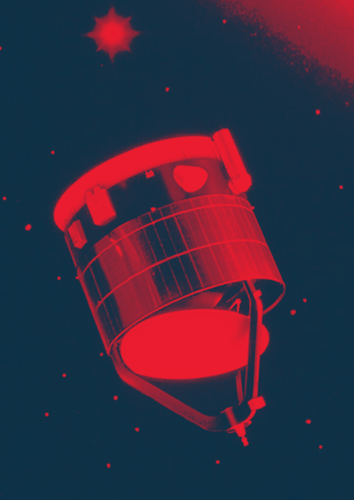Comets: an overview
With a name derived from the Greek komētēs, meaning a 'long-haired' star, comets are ancient celestial icebergs of the Solar System. Each comet is roughly 4600 million years old and formed at the same time as the Sun, Earth and the other planets.
In the late 1940s, American astronomer Fred Whipple proposed the modern view of comets. He said that a comet’s nucleus was a like dirty snowball, mostly made of ice, which partly evaporates when the comet swings close to the hot Sun.

His idea has now been proven using modern scientific observations, such as taking radar measurements of comet nuclei that pass close to Earth and measurements from space missions such as ESA's Giotto and Rosetta. A comet nucleus is usually several kilometres across.
The defining characteristic of a comet is its tail – the long 'hair' to which the Greeks referred. Tails come in two main types, ion (or plasma) and dust. When sunlight evaporates the ice on the comet’s surface, charged particles and dust are released into space.

The ion tail is narrow and points directly away from the Sun thanks to electrically charged particles that pervade space known as the 'solar wind'. The dust is dropped into the comet’s orbit and gently moulded into a fan-shaped tail by the collision of sunlight.
Occasionally, a comet can be seen also showing a 'third' tail apparently pointing towards the Sun. This is known as an 'anti-tail' and is an optical illusion. The tail is really pointing directly away from the Sun, but because of the Earth’s relative location in space, we see the wide tail, fanning out behind the comet and appearing to be on either side of the central region containing the nucleus.

Comet tails do have one lasting effect that everyone on the Earth’s surface can enjoy: the annual meteor showers. Although space is littered with dust, causing ‘sporadic’ meteors at random, there are also swarms of dust particles left in space by comets that the Earth ploughs through every year.
There are around ten good, reliable showers every year such as the Perseids in August and the Leonids in November. Meteors show up as fast-moving streaks of light across the night sky. They are caused by dust particles slamming into the Earth’s atmosphere and burning up because of friction. Most people call the phenomenon ‘shooting stars’.
Next time you see a meteor, wonder about the comet it came from and the four and a half thousand million years of cosmic history it represents.















 Germany
Germany
 Austria
Austria
 Belgium
Belgium
 Denmark
Denmark
 Spain
Spain
 Estonia
Estonia
 Finland
Finland
 France
France
 Greece
Greece
 Hungary
Hungary
 Ireland
Ireland
 Italy
Italy
 Luxembourg
Luxembourg
 Norway
Norway
 The Netherlands
The Netherlands
 Poland
Poland
 Portugal
Portugal
 Czechia
Czechia
 Romania
Romania
 United Kingdom
United Kingdom
 Slovenia
Slovenia
 Sweden
Sweden
 Switzerland
Switzerland


































